So you want to learn Spanish, huh? Maybe you're planning a trip to Mexico, trying to impress your Spanish-speaking neighbors, or just tired of feeling lost when your favorite show switches to Spanish without subtitles. Whatever brought you here, you're probably wondering where the heck to start.
The good news? You don't need to memorize verb conjugation tables or stress about rolling your Rs just yet. Start simple by learning how to say "hello" in Spanish and other basic words that'll give you an instant confidence boost. Master these fundamentals first, and everything else becomes way less intimidating.
To help you out, this post will walk you through 100 Spanish words that'll actually matter in your daily life.

Getting Started with Spanish
Learning Spanish can be a rewarding and enriching experience, especially for those who want to connect with the rich culture and history of Spanish-speaking countries. With over 460 million native speakers, Spanish is the second most widely spoken language in the world, making it an essential language to learn for anyone interested in global communication.
Why Learn Spanish?
Learning Spanish makes you more valuable in today's job market. Companies pay bilingual employees higher salaries because they can serve Spanish-speaking customers and expand into new markets. Healthcare, education, and customer service especially need people who speak both English and Spanish.
The benefits go way beyond your paycheck though. Spanish connects you to over 500 million people worldwide and lets you experience their cultures firsthand. Instead of reading subtitles or relying on translations, you'll understand Spanish movies, music, and books the way they were meant to be experienced.
Traveling also becomes a completely different experience when you speak Spanish. Instead of pointing at menus or struggling through broken English conversations, you can chat with locals about their favorite hidden spots, understand cultural jokes, and connect on a personal level.
Greetings and Introductions
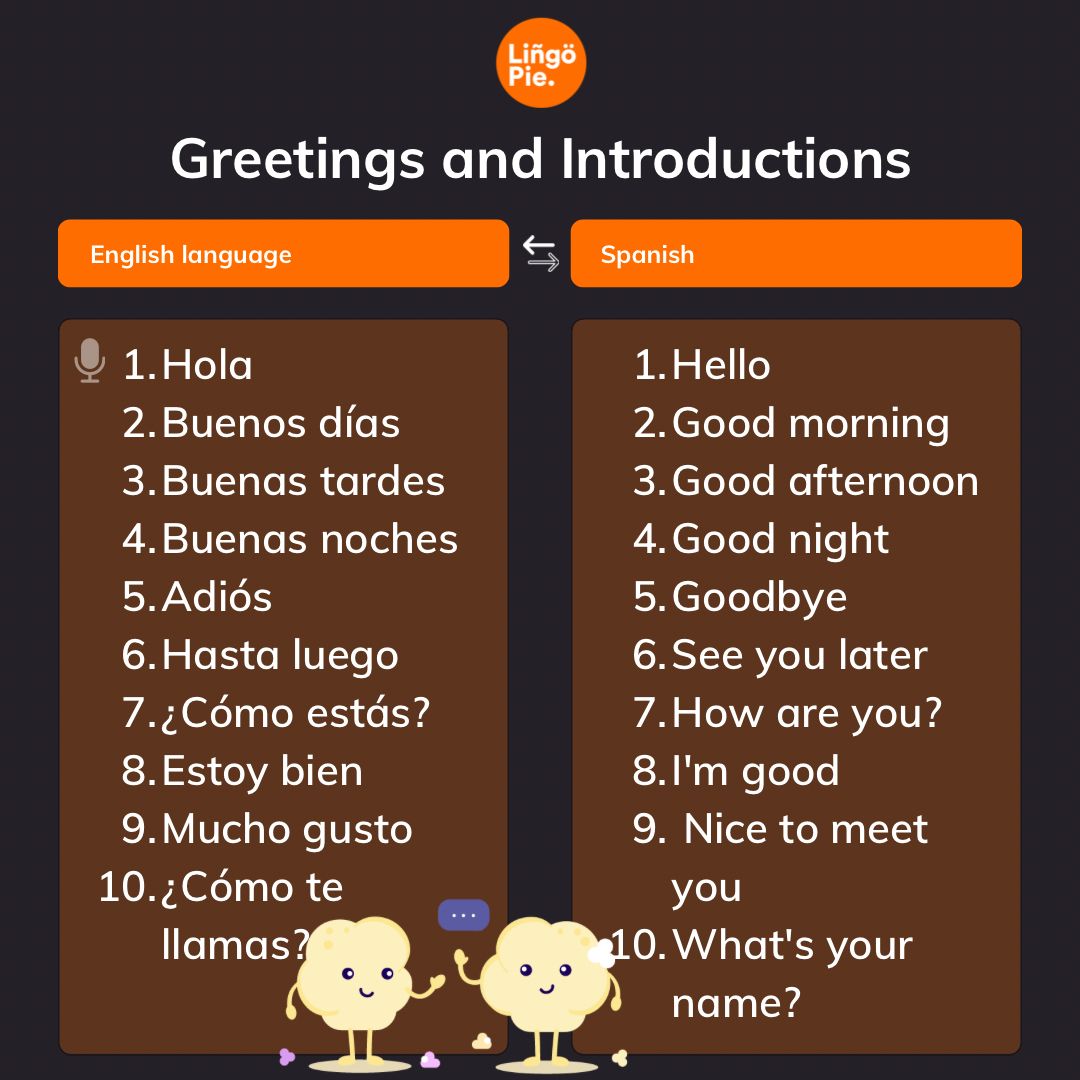
Now, let's explore 100 easy Spanish words and phrases, alongside their English translations. These simple language building blocks are the first crucial steps toward learning a new language.
As a language learner, you will probably be most excited to start speaking a new language, and to do this effectively, you will need to know how to greet people.
- Hola - Hello
- Buenos días - Good morning
- Buenas tardes - Good afternoon
- Buenas noches - Good night
- Adiós - Goodbye
- Hasta luego - See you later
- ¿Cómo estás? - How are you?
- Estoy bien - I'm good
- Mucho gusto - Nice to meet you
- ¿Cómo te llamas? - What's your name?
Examples:
- Hola, mucho gusto. ¿Cómo estás? - Hello, nice to meet you. How are you?
- Buenas tardes. Estoy bien, gracias. ¿Y tú? - Good afternoon, I'm good, thanks. And you?
Numbers: Prices, Dates, Times, and Ages
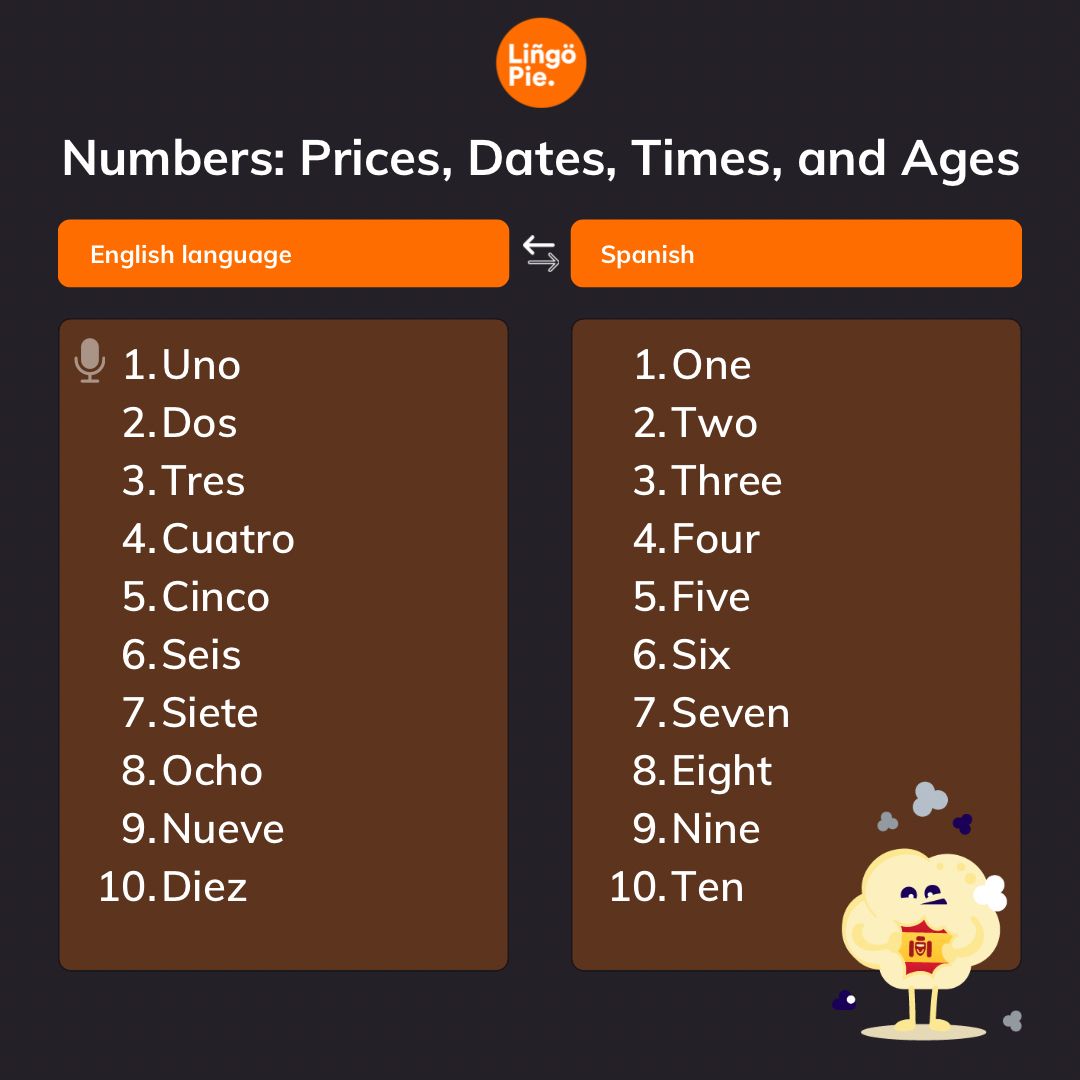
Another crucial part of the Spanish language is numbers. You need numbers to understand prices, dates, times, and ages.
All of these aspects of a language are basic but essential for everyday life.
- Uno - One
- Dos - Two
- Tres - Three
- Cuatro - Four
- Cinco - Five
- Seis - Six
- Siete - Seven
- Ocho - Eight
- Nueve - Nine
- Diez - Ten
Spanish numbers follow straightforward patterns once you learn the basics. For prices, use "cuesta" (costs) or "es" (is) - "La pizza cuesta diez dólares" (The pizza costs ten dollars). Dates reverse the English order: day first, then month - "15 de mayo" (May 15th). Use "de" to connect the day and month.
For telling time, use "es la" for 1 o'clock and "son las" for all other hours - "Es la una" (It's 1 o'clock) and "Son las tres" (It's 3 o'clock). Add "y" for minutes after the hour - "Son las dos y quince" (It's 2:15). Ages use the verb "tener" (to have) - "Tengo veinte años" (I am 20 years old), literally "I have 20 years."
Examples:
- Mi cumpleaños es el tres de octubre - My birthday is on October third
- Tengo cinco años - I am five years old
- Son las seis y media - It's six thirty
- El libro cuesta nueve dólares - The book costs nine dollars
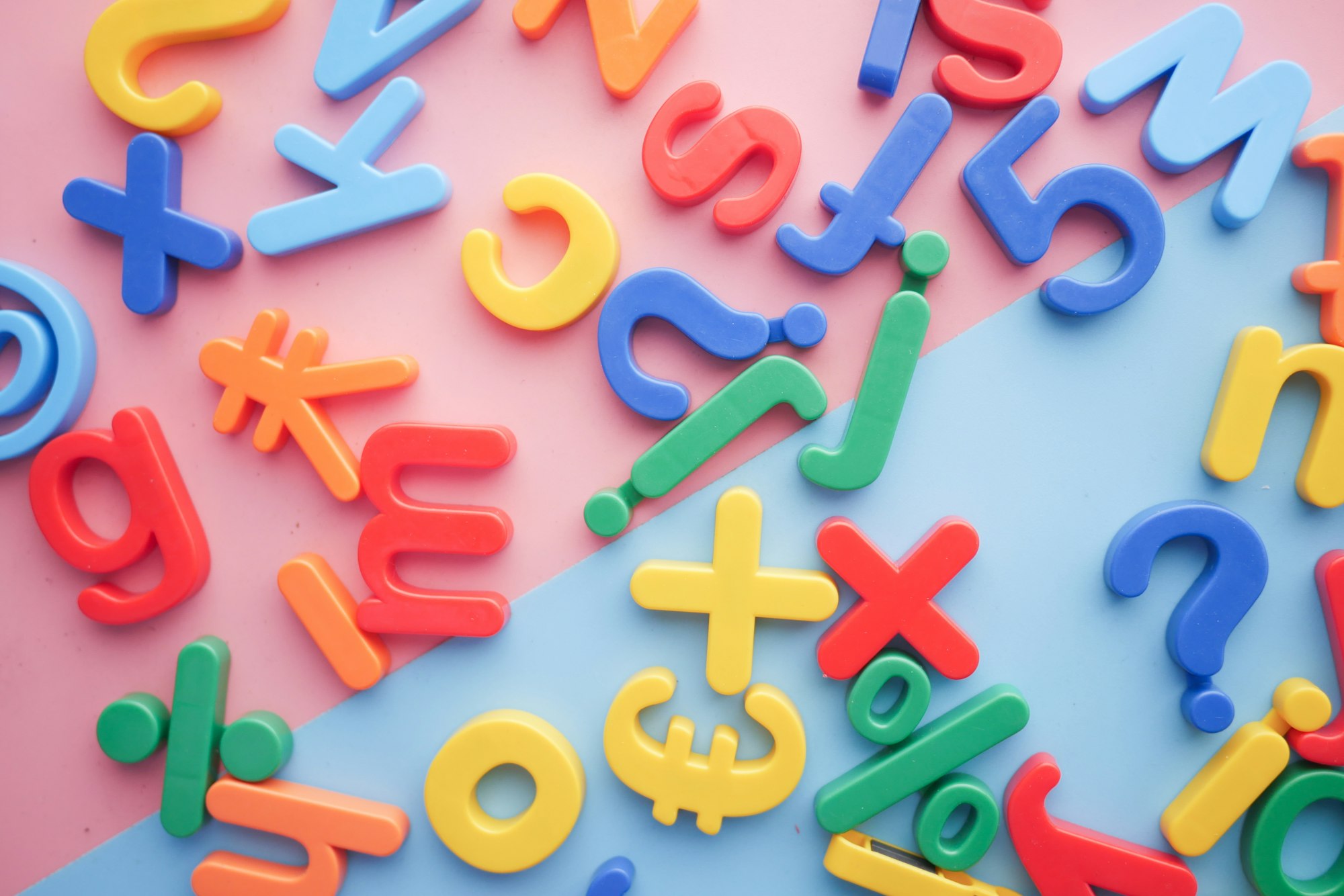
Times of the Day or Year
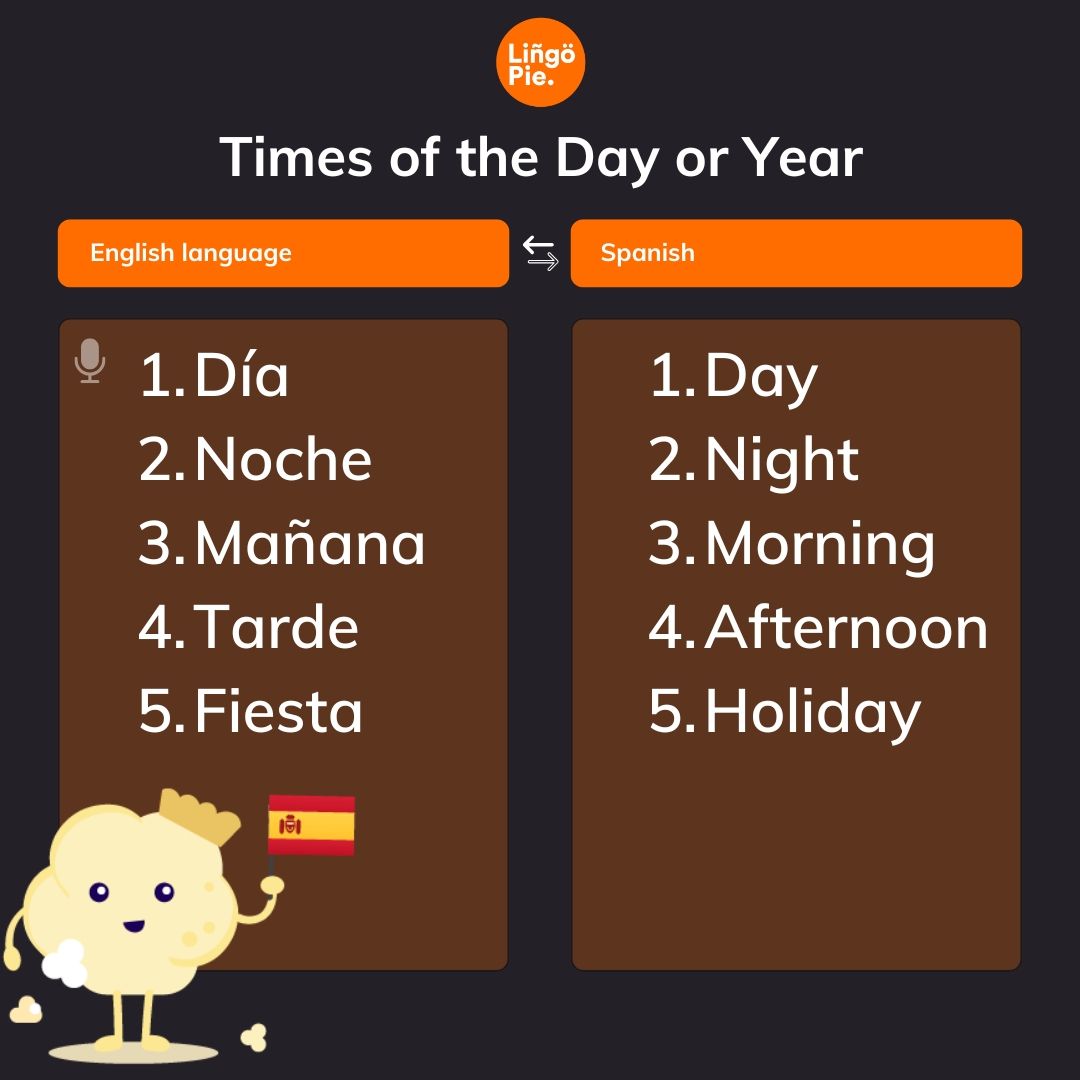
- Día - Day
- Noche - Night
- Mañana - Morning
- Tarde - Afternoon
- Fiesta - Holiday
Examples:
- Hoy es un buen día - Today is a good day
- Me gusta salir por la noche - I like to go out at night
- El banco está cerrado porque es una fiesta nacional - The bank is shut as it's a national holiday
Food and Drink
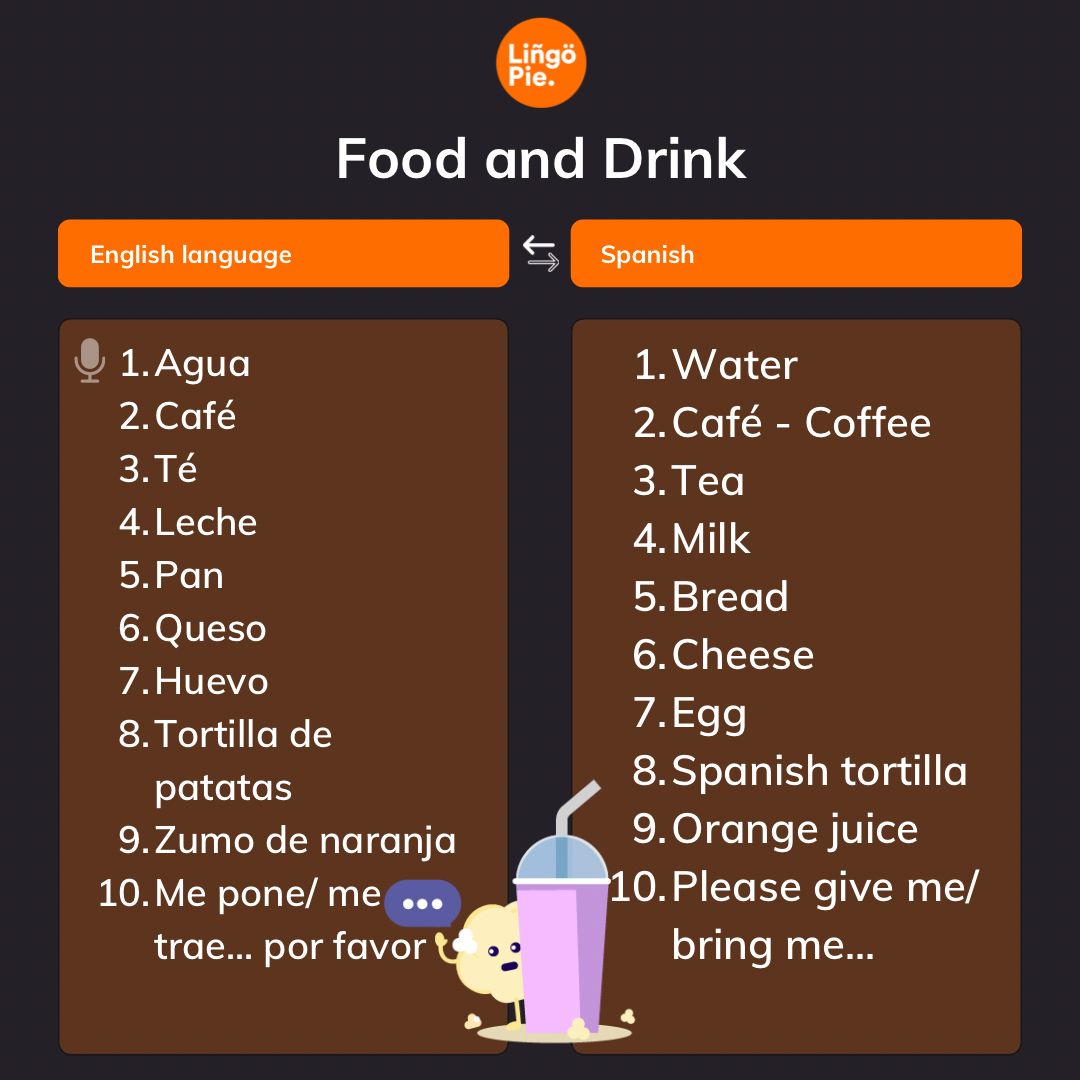
Another vital aspect of learning the Spanish language (and culture) is learning the common food and drink words. If you are lucky enough to study Spanish in Spain or Latin America, you will get well-acquainted with these delicious words very quickly.
- Agua - Water
- Café - Coffee
- Té - Tea
- Leche - Milk
- Pan - Bread
- Queso - Cheese
- Huevo - Egg
- Tortilla de patatas - Spanish tortilla
- Zumo de naranja - Orange juice
- Me pone/ me trae... por favor - Please give me/ bring me...
Examples:
- Me pone un cafe con leche, por favor - Please give me a milky coffee
- Me trae queso con el pan, por favor - Please bring me cheese with the bread
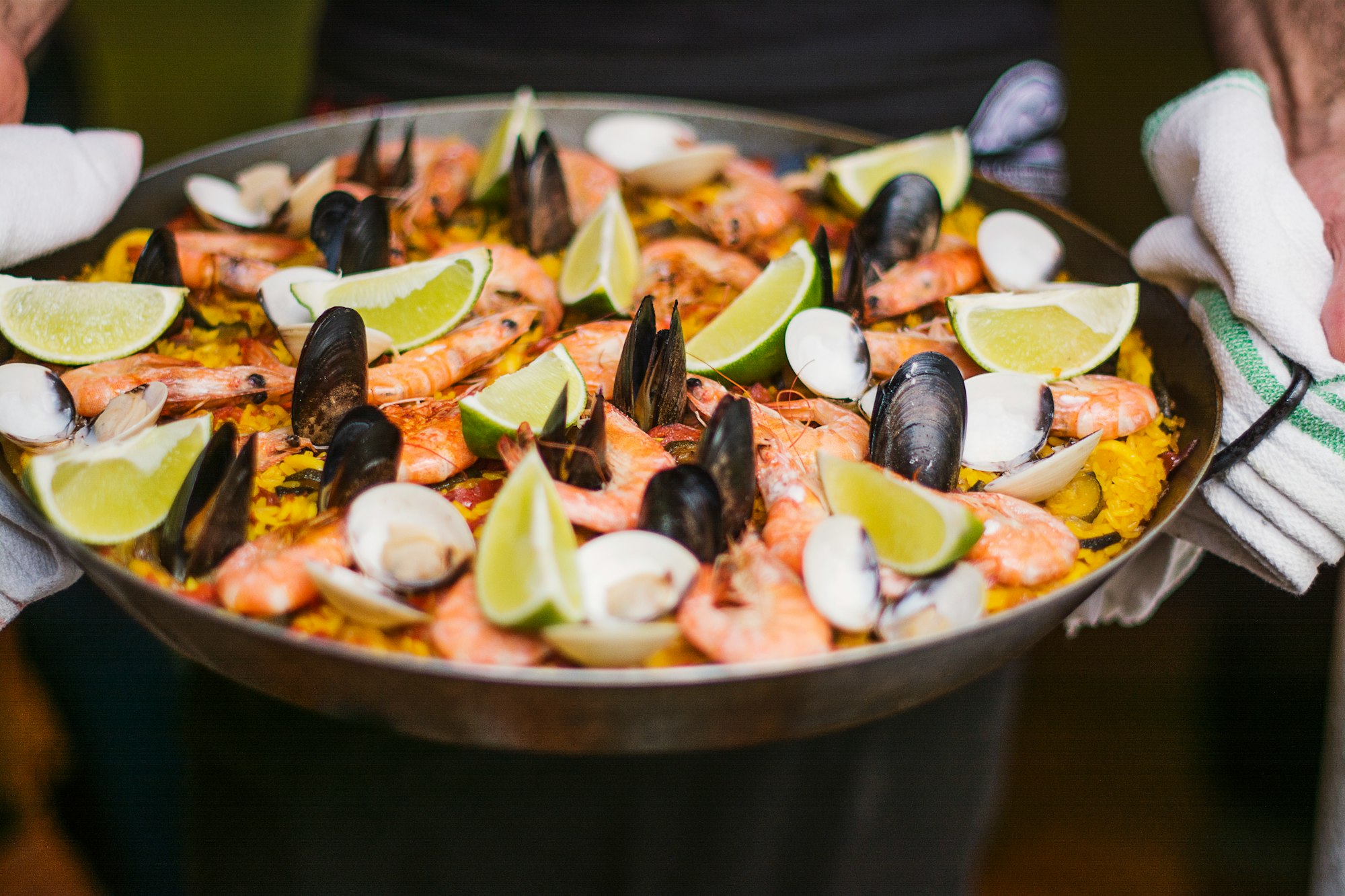
Transportation
Next, you will need to think about getting around a Spanish-speaking country, asking Spanish speakers for transportation advice and even developing your language skills to the point where you can help others on public transport.
- Coche - Car
- Autobús - Bus
- Tren - Train
- Avión - Airplane
- Taxi - Taxi
- Metro - Metro/ Subway/ Underground
Examples:
- ¿A qué hora llega el tren a Madrid? - What time does the train to Madrid arrive?
- ¿Dónde está la parada de autobús? - Where is the bus stop?
Clothing and Accessories
There are so many everyday items that you may wish to talk about in Spanish, it is hard to list them all. But some common words that you may use a lot in your native language are items of clothing and accessories, so here are a few basics.
- Camisa - Shirt
- Pantalones - Pants
- Zapatos - Shoes
- Gorro - Hat
- Bufanda - Scarf
- Gafas - Glasses
- Bolsa - Bag
Example:
- Llevo un gorro y una bufanda porque hace frío - I'm wearing a hat and a scarf because it's cold
- Mis gafas están en mi bolsa - My glasses are in my bag
Emotions and Feelings
At this point, you can start to express yourself more fully in your new language by using emotional words and phrases. As you practice Spanish, you will notice your own personality coming through more clearly in your speech.
- Feliz - Happy
- Triste - Sad
- Enojado/a - Angry
- Cansado/a- Tired
- Nervioso/a - Nervous
- Contento/a - Content
- Asustado/a - Scared
- Enamorado/a - In love
- Preocupado/a- Worried
- Emocionado/a - Excited
Note that the "o" endings are for males and the "a" endings are for females. Some Spanish speakers use an "e" ending if they prefer to present as nonbinary, though this is not widely used in all Spanish-speaking countries and is not one of the official Spanish grammar rules.
As you can see, the Spanish language, like all languages, continues to develop with society. Language is a beautiful tool for self-expression and learning, and this is one of the reasons why learning the Spanish language is such a wonderful idea.
Basic Places
- Casa - House
- Calle - Street
- Ciudad - City
- País - Country
- Mundo - World
Example:
- Barcelona es la ciudad más hermosa del mundo - Barcelona is the most beautiful city in the world
- ¿En qué calle está tu casa? - What street is your house on?
Useful Spanish Nouns
Now, we can start building our miscellaneous Spanish vocab, starting with some practical nouns. These are language building blocks that will help you to form whole sentences.
The more common words you know in Spanish, the more you will be able to express thoughts, as well as understand movies and TV shows.
Learning everyday nouns in Spanish can significantly improve your ability to comprehend and speak Spanish in a Spanish-speaking country. You might want to make Spanish flashcards of these common and useful words.
- Fuego - Fire
- Tierra - Earth
- Aire - Air
- Familia - Family
- Amigo/a - Friend
- Cuidado - Caution
- Ayuda - Help
- Dinero - Money
- Regalo - Gift
- Trabajo - Work
- Fiesta - Party
- Problema - Problem
- Pregunta - Question
- Respuesta - Answer
- Juego - Game
- Música - Music
- Película - Movie
- Libro - Book
- Vacaciones - Vacation
Regardless of your learning style, it's important to practice speaking Spanish regularly to improve your language learning process and gain confidence when communicating with native speakers.
This is where language exchange partners come in handy. They tend to be native speakers from Spanish-speaking countries. Your language partner will offer high-quality and authentic speaking practice in Spanish that cannot be replicated by audio courses or self-taught Spanish courses.
As you progress in your language studies, you can focus on mastering Spanish grammar and building your vocabulary. Memorizing common words and phrases in Spanish, such as those listed above, is a great start.
Common Spanish Verbs
Finally, here are some of the most commonly used and useful Spanish verbs. These can be combined with the nouns above to make whole phrases in Spanish.
And just like that, you can use and understand another language.
- Ser - To be
- Estar - To be
- Tener - To have
- Ir - To go
- Venir - To come
- Vivir - To live
- Poder - To be able to
- Hablar - To speak
- Comer - To eat
- Beber - To drink
- Hacer - To do/make
- Ver - To see
- Saber - To know (how to)
- Ayudar - Help
- Trabajar - Work
- Leer - Read
- Aprender - Learn
- Entender - Understand
Examples:
- Mi amigo quiere saber hablar Español - My friend wants to be able to speak Spanish
- Estoy aprendiendo Español para mi trabajo - I am learning Spanish for my job
- Tengo que aprender Español para entender esta película - I have to learn Spanish to understand this movie
You now have a list of 100 common words in Spanish for beginners, as well as some example sentences. Keep practicing and using these words in context to improve your Spanish skills.
If you do not have a Spanish speaker with whom to practice your language skills, you can use online resources instead.
There are various Spanish courses, Spanish podcasts, language-learning apps, and streaming sites that you can employ to help you learn Spanish faster. You can even find a Spanish tutor online, through sites like Lingopie, the language learning platform.
You will sound like a native speaker in no time with a bit of effort and determination.
Spanish Alphabet and Pronunciation
Confused with some of the words we added to our list? Then you've got to familiarize yourself with the Spanish alphabet and pronunciation first!
The Spanish alphabet consists of 27 letters, with the additional letter “Ñ” being a distinct feature of the Spanish language. The pronunciation of Spanish words can vary depending on the region and dialect, but here are some general guidelines:
- Vowels: Spanish vowels are pronounced with a more open and relaxed sound than in English. For example, the “a” in “casa” is pronounced more like “ah” than “ay”.
- Consonants: Spanish consonants are generally pronounced with a softer sound than in English. For example, the “c” in “casa” is pronounced more like “th” than “k” in some regions, while in others it is pronounced like “s”.
- Accents: Spanish words often have accents, which can change the pronunciation and meaning of the word. For example, “café” (coffee) is pronounced with a stress on the second syllable, while “cafe” (coffee shop) is pronounced with a stress on the first syllable.
Mastering the Spanish alphabet and pronunciation is essential for effective communication and language learning. With practice and dedication, you can improve your Spanish language skills and become proficient in no time.
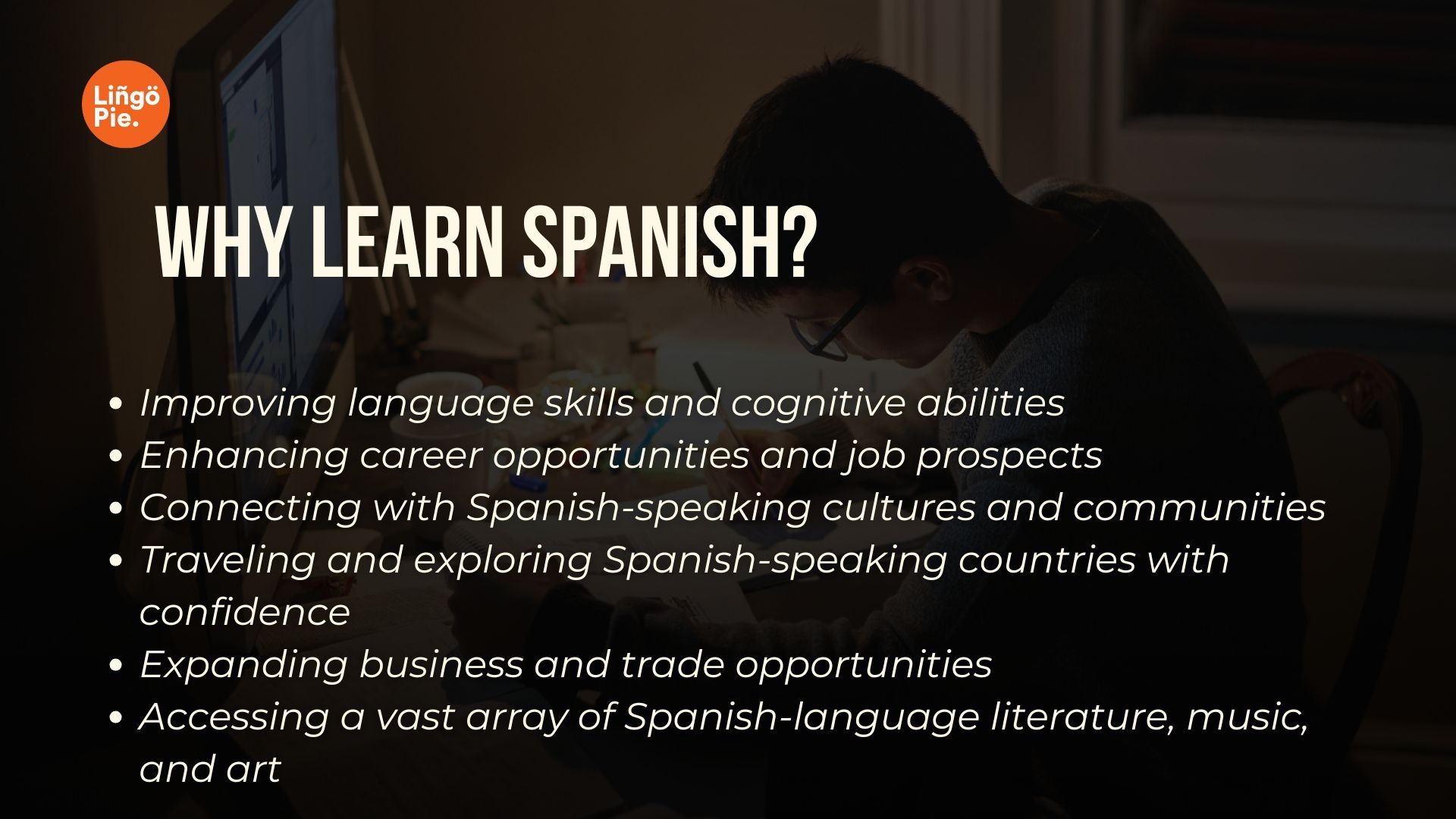
The Best Way to Learn Spanish On Your Own
Learning Spanish on your own takes the right mix of tools and consistency. While expensive classes and formal programs can help, you can absolutely become conversational without them. Instead, the key is combining speaking practice with exposure to real Spanish content, then sticking to a routine that fits your lifestyle.
Practice Speaking from Day One
Find a conversation partner through online language communities, apps like Tandem, or hire an online tutor for structured practice. Speaking with native speakers helps you pick up natural pronunciation, common phrases, and cultural context that textbooks miss. Even 15 minutes of conversation practice beats hours of silent studying.
Use Multiple Learning Methods
Combine vocabulary apps with real Spanish content. Listen to Spanish podcasts during your commute, watch tvshows with dual subtitles, and play Spanish music while you work. Each method reinforces what you're learning in different ways, making the language stick faster.
Set a Realistic Schedule
Consistency beats intensity when learning Spanish. Study for 20-30 minutes daily rather than cramming for three hours once a week. Your brain needs time to process new information, and regular exposure helps Spanish feel natural instead of forced.
Track Your Progress
Keep a simple log of new words you learn and situations where you used Spanish successfully. Seeing your improvement over weeks and months keeps you motivated when grammar rules feel overwhelming or pronunciation seems impossible.
Ready To Speak Spanish
Learning Spanish can feel overwhelming at first, but starting with the basics sets a strong foundation for success. To take your Spanish even further, try Lingopie. It’s a fun, immersive way to learn the language through real TV shows and movies with interactive subtitles. You’ll hear these words in context, absorb grammar naturally, and stay engaged with authentic content.
Ready to boost your learning? Try Lingopie now and turn your Spanish journey into something you’ll actually look forward to every day.
FAQs About Learning the Spanish Language
Now, let's take a look at some frequently asked questions about learning Spanish at home.
How can I learn Spanish by myself?
You can learn Spanish by yourself with the help of mobile apps for language learning, audio courses, or podcasts designed for learning Spanish. If you prefer to study Spanish while having fun, you can watch Spanish TV shows and movies. The methods you use depend on your budget and learning style.
Can I learn to speak Spanish in 3 months?
Yes, you can learn to speak Spanish in three months at a reasonable level. If you are learning Spanish with a Spanish tutor, you may progress faster. This is because Spanish tutoring, on video chat or in person in a classroom setting, allows for natural conversation to occur. Sometimes, intensive classroom learning is the fastest way to learn.
Is Spanish difficult to learn?
No, learning Spanish is not too difficult. Most English speakers find that they can learn Spanish quite easily with the help of great resources, such as movies, apps, and a Spanish tutor. There are a lot of words in Spanish that are similar to English words. This makes learning the new language easier.
What is the best site for language learning?
The best sites for language learning are those that connect you with a language exchange partner who is a native speaker of your chosen language. You will also find sites that offer Spanish TV and movie content and tutoring to be very useful going forward.


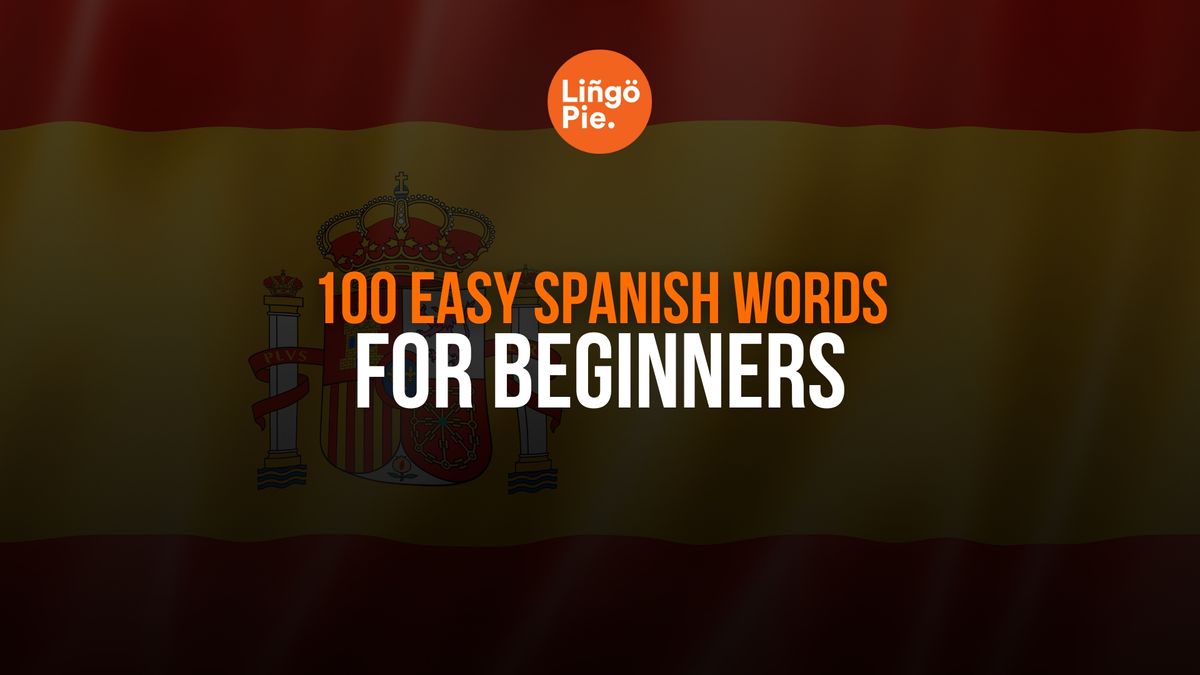


![Spanish Chat Abbreviations You Need To Know [Guide]](/blog/content/images/size/w1200/2024/08/Spanish-chat-abbreviations.jpg)



